If you find your PC or laptop is becoming slower than it used to be or if your laptop battery is draining out very fast then there are chances that it cables because there are too many apps open in the background like the anti-virus app program runs in the background always to protect your systems from virus even if it’s idle.
In Windows 10 some programs keep running in the background as it is built up in that way and the reason behind the same is if you require opening those apps again, then those apps will pop up in seconds. Other reasons for the applications to run in the background may also be letting your computer use the additional features like downloading crucial data, showing updated notifications it’s true that the mentioned features are also important and, in several but the background apps can block system resources, and drain out your battery and SAP the bandwidth
Useless processors and applications running in the background also require CPU and RAM usage. Not just that, but it also has an impact on your device’s performance. To solve this issue once and for all, Windows 10 has introduced a new option that lets you choose the feature and app that can keep running in the background. This guide will help you with steps on how to put programs on a sleep mode on Windows 10.
How can you put the programs into sleep mode on your Windows 10 computer?
Steps to put the programs into sleep in Windows 10 are given below. Two methods will be given to guide you with the process:
How to place the programs in sleeping mode using Privacy settings
- Step 1 -Go to Windows 10 Start button and select Settings
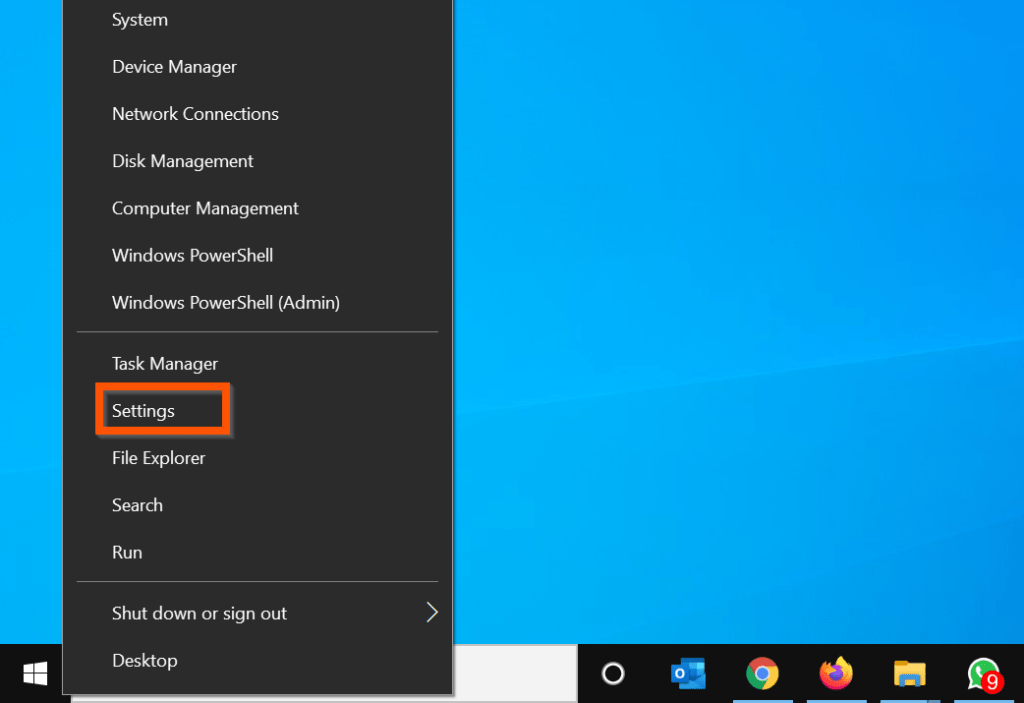
- Step 2 – Below shown Windows Settings screen will appear. Here click on Privacy settings
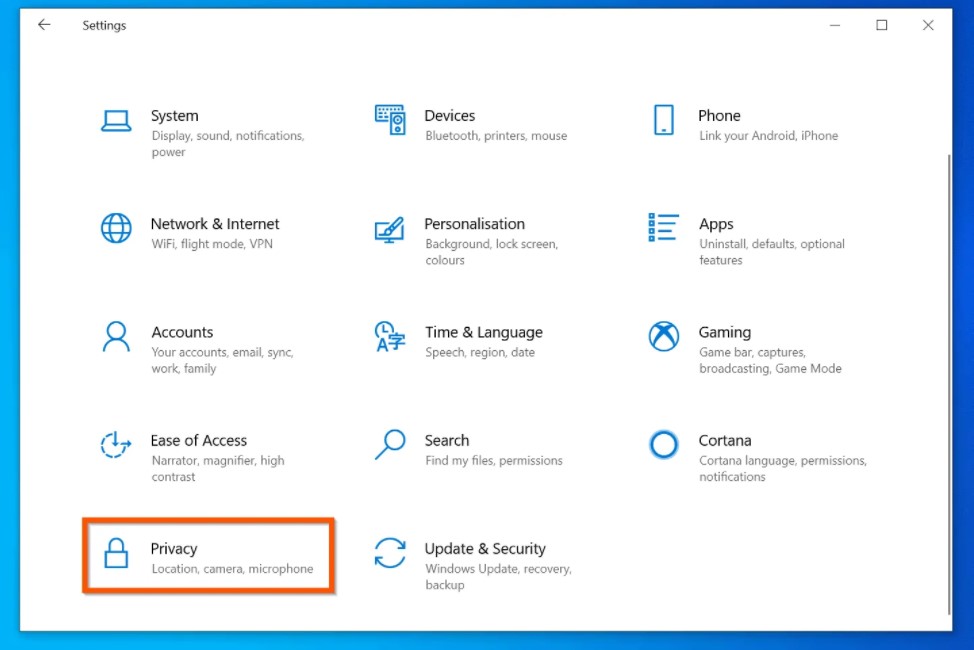
Source: itechguides.com
- Step 3 – On the left side of Privacy settings roll down and select the option ”Background Apps”
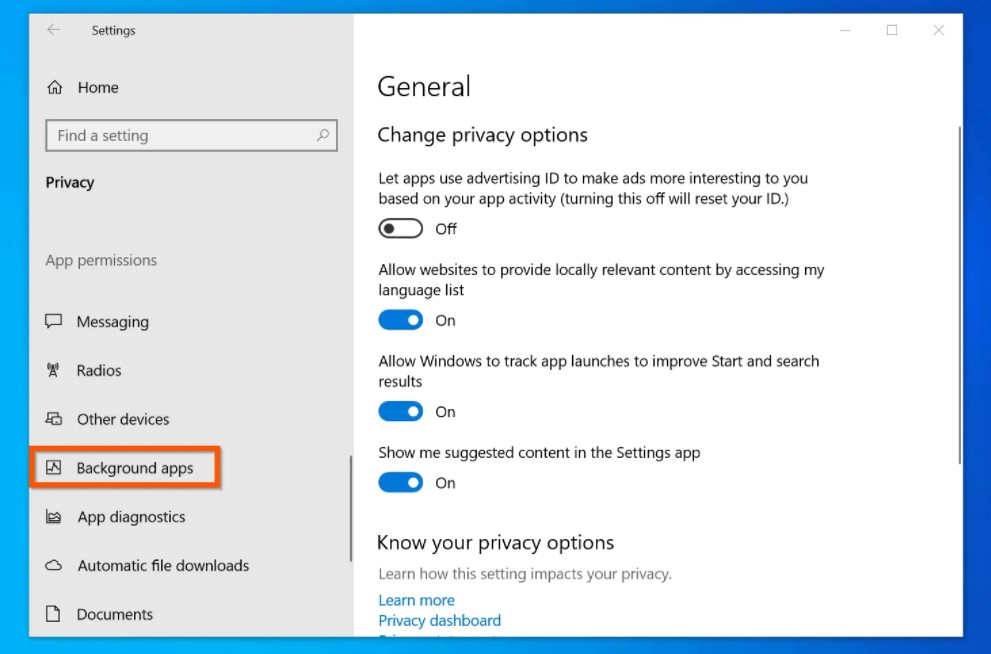
Source: techguides.com
- Step 4 – Now if you want all the apps to sleep i.e., stop them running in the background then on the Background Apps settings toggle the “Let the apps keep running in the background” and switch it from On to Off. Immediately all the apps will be turned off. It is shown in the second below image
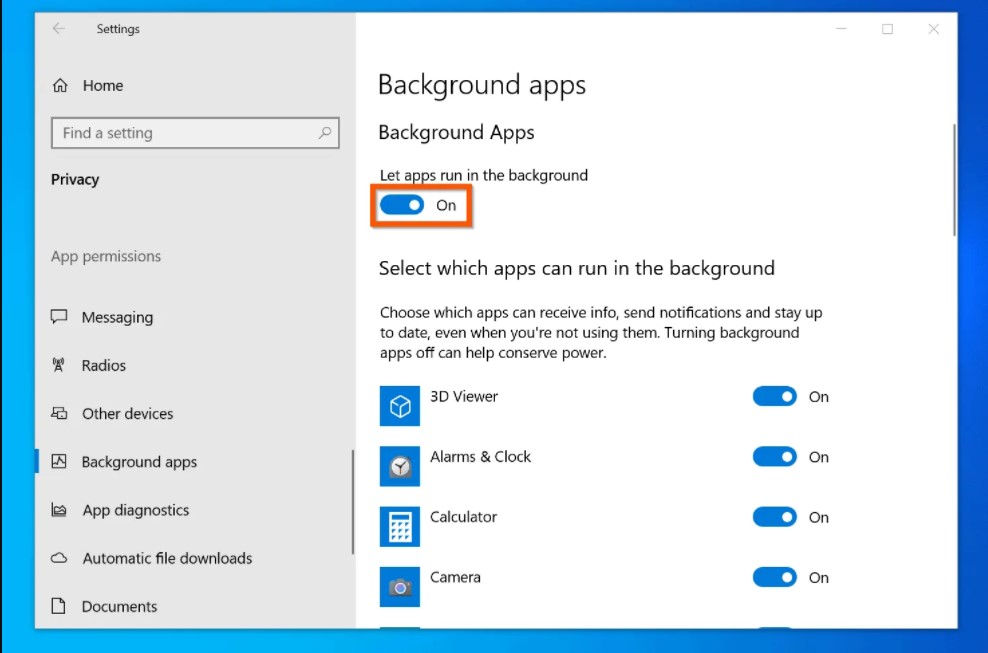
Source: itechguides.com
These apps given here will be turned off.
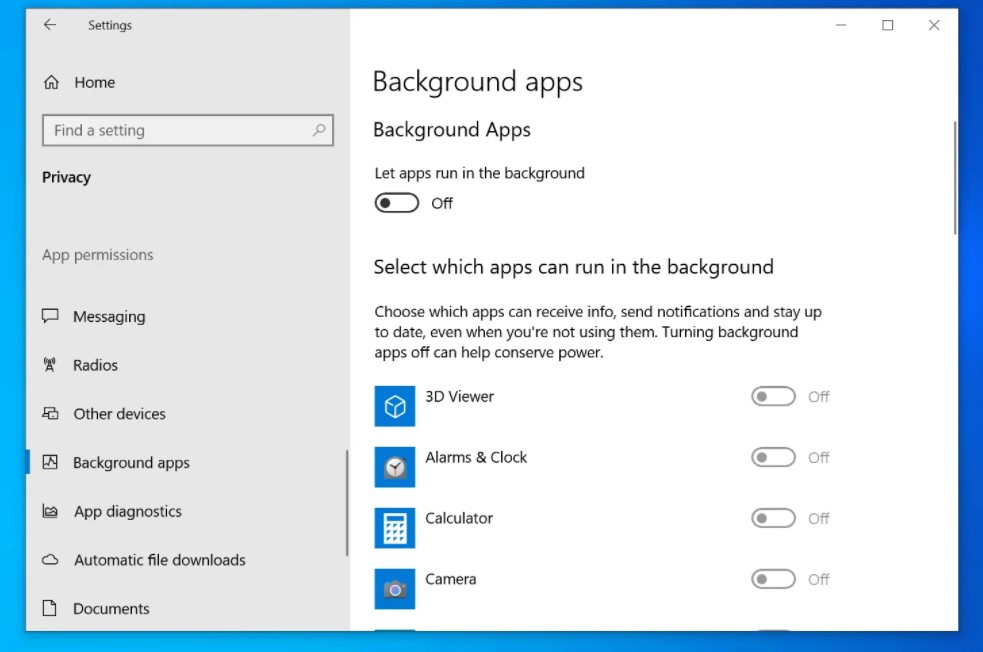
Source: itechguides.com
- Step 5 – If you want a specific app to sleep then you must keep the “Let apps run in the background turned on and just slide the switch beside the app and turn it from on to off.
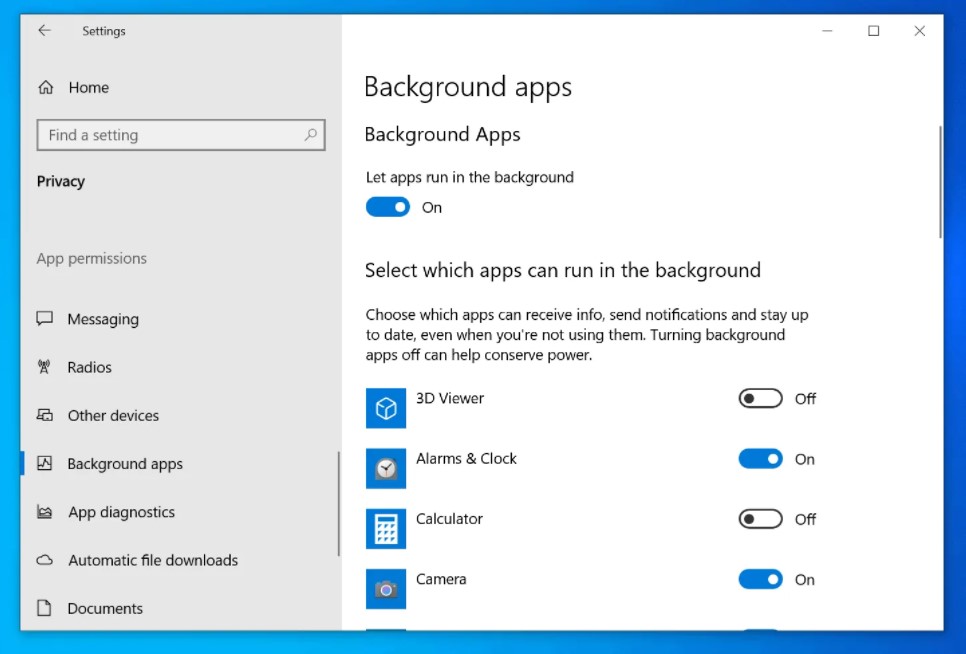
Source: itechguides.com
These were the steps to put programs to sleep mode via Privacy settings.
There is another method by which you could put the programs in sleep mode or prevent the applications from running in the background. Using system settings and by switching on the battery saving mode you can block the programs from running in the background.
Though this option generally turns on once the power level of your battery lessens to 20 percent, you could also manually turn the option on whenever it is needed.
The steps using systems setting as:
- Step 1 – By hitting the Start menu open the Settings and select Systems

Source: turbogadgetreviews.com
- Step 2 – Then, tap on Battery and find the Battery Saver on the right.
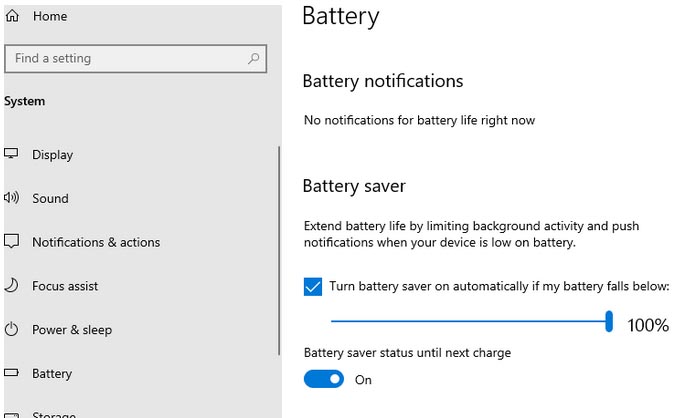
Source: turbogadgetreviews.com
- Step 3 – Use the sliding switch to turn off: “Battery saver status until next charge”. This will switch on the battery-saving mode.
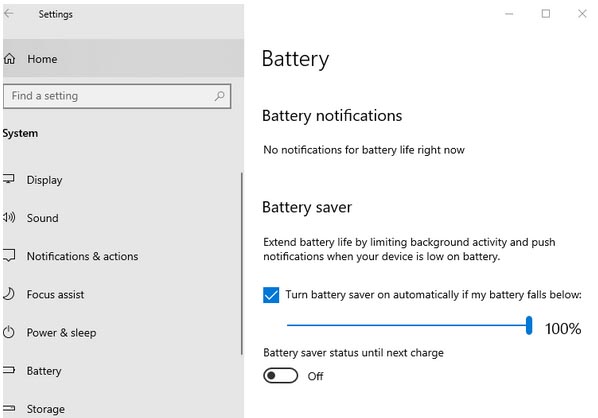
Source: turbogadgetreviews.com
After finishing the process, the apps will not be running in the background anymore.
However, this process will be applicable only if the applications are from Microsoft Store from outside. Programs downloaded from outside have to be stopped manually to block them from running.
Guide to hibernate and shut down your PC
There are numerous ways in which you can shut down your PC.
Below are given the steps to shut down your PC:
Turn off your PC completely
- For Windows 10
First, select the start button followed b Power> shut down
- For Windows 8.1
Move your touchpad towards the lower left-hand corner of your laptop or computer screen then right-clicks the start button or you can also tap on Windows logo key+ X on your keyboard. Tap on shut down.
- For windows7
Click on the Start button and then select the shutdown button.
Hibernate
How to put your PC in hibernation mode?
1. Open the power setting
- For Windows 10
Start, after that go to settings>systems>Powe and sleep> Additional Power setting
- For Windows 8.1
Go to the left down corner of the screen and tap Search, then enter the power option and click on Power options
- For Windows 7
Select the start button> Control Panel>System and Security and then click on the Power option
2. Click on “Choose what the power button does”>Change settings that are currently unavailable”. Beneath the ShutDown settings select “Hibernate” checkbox and then “Save Changes”
There is another way to hibernate your PC
- For Windows 10- Click on Start followed by Power> Hibernate.
- For Windows 8.1 – Take your touchpad or mouse to the lower edge of the left hand of your screen and right-click to Start Button or press Windows logo key+X
Tap on shut down and then choose Hibernate. Or you can also go to the right lower edge of the screen and then click on settings.
- For Windows 7 – Start button > select the arrow next to shut button then click on Hibernate
Other options of sleep settings in Windows 10
There are a few similar options to sleep that you can explore for your Windows 10. Some of the options are as follows.
- Hibernate – Hibernate option is almost the same as the sleep mode. With this option, you can decide the idle time of your computer before it goes to hibernation mode. In the hibernation mode, your PC consumes even less power than the sleep mode. Additionally, you are covered from the risk of data loss in the situation of power breakdown. In the hibernate mode, Windows moves the data from RAM to hard disk and then turns the power off. This will help to save a lot of power and your data would be safe.
- Hybrid Sleep – This is a combination of both sleep and hibernation mode. In this state, your data is safe even during power cuts. It puts your PC to sleep without risking the data in it. You should enable the mode when your PC might face the risk of power loss. When you turn on the option well in advance, you can be assured that your data is safe. In the hybrid sleep mode, Windows copies the data of the RAM to the hard drive and then puts the PC to sleep. You can turn the option off and on based on your requirement. The OC takes a little longer to go into this mode than the normal sleep mode.
- Sleep after – Various sleep states are depending on the power. In the sleep mode, the hardware of the PC is powered off and it uses very minimum power to maintain the data of the RAM. The data of the RAM has to keep running so that you can continue easily from where you left. In the sleep-after mode, your PC would hardly use 10-15 watts of power. When you use the option of ‘sleep after’, your PC can sleep after being idle for 15-20 minutes. Make sure you do not download or install anything when your PC goes to sleep.
Conclusion
Very little power is used by the sleep mode and your device starts up faster, you are instantly back where you have left any you won’t lose any of your data or work because of battery draining. Windows 10 automatically saves all your work. Saving the system resources in your device lets you work more efficiently and the machine runs faster and smoother. Hope this guide about how to program sleep mode in your computer with highlighted steps, in which best method has been shown have helped you.
What you need to do is put those unnecessary apps in sleep mode and some of your device resources used up by those programs will be freed up. In this way, your PC will freshen up and start working faster.
FAQs
1. Can you run programs in sleep mode?
When the computer is in sleep mode you cannot run any application. It doesn’t matter if the thread is running it, because as the computer goes to sleep thread will also sleep.
2. How to stop programs from running in the background on Windows 10?
First go to Start > Settings > Privacy > background apps. Go to the background Apps, under them confirm that the apps run in the background are turned off.
3. What happens if I put an app to sleep?
Putting apps to sleep results in the app staying inactive until it’s manually opened again and the apps won’t be able to check the new updates and notifications.
Contents
